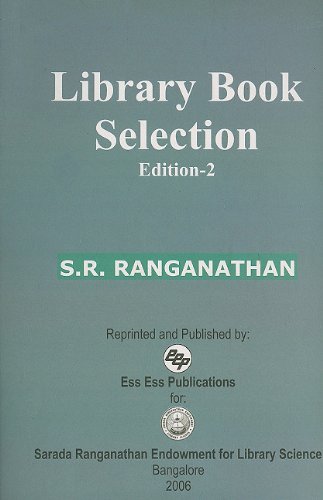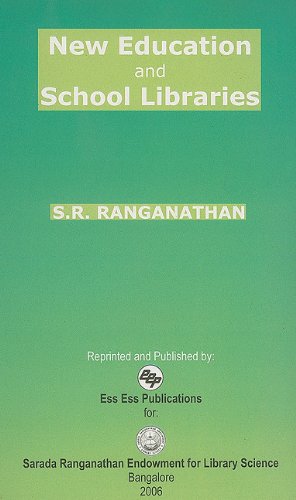Library book Selection
Rs. 750
Additional information
| ISBN | 8170004632 |
|---|---|
| Year of Publication | 2006 |
| Binding | HardBound |
| Pages | |
| Edition | |
| Language | English |
PART--A
Introduction
Chap
AA Past Practices
AB Past Agencies
AC Shift in responsibility
AD A Family of Books
AE Conspectus
PART --B
Messages for Book Selection
BA Messages of Law 1
BB Message of Law 2
BC Message of Law 3
BD Message of Law 4
BE Message of Law 5
BF Joint Compromise Messages of the Five Laws
BG Message of the Five Laws and the Status of the Library
PART --C
CA Change of Outlook
CB A Priori Approach
CC Pragmatic Approach
Chap
PART --D
First Law of Library Science and book Selection
DA First Law
DB Physique of the Book
DC Printed Page
DD Subtle Body or Exposition of the Book
DE Illustration as Subtle Body
DF Index as Part of the Subtle Body
DG Soul ----Standard of Thought
DH Soul----Kind of Appeal
DJ Bibliography.
DK Ordinary Book
DL Bibliophilism
DM Overall Evaluation
DN A Hypothesis
DP Humanities
DQ Social Sciences
DR Arts and Crafts
DS Pure Science
PART --E
Second Law of Library Science and Book Selection
EA Second Law
EB Individual Want
EC Past Wants
ED Subject-Scatter
EE Standard-Scatter
EF Language -Scatter
EG Potential Want
EH Anticipated Want
EJ Reference Book
EK Book
EL Periodical
EM Subnormal Reader
PART --F
Third Law of Library Science and Book Selection
FA Third Law
FB Third Law and Second Law
FC The New Helping the Old
FD Mutual Help
FE Responsibility for Book Selection
FG Audit Bogey
FH Egocentricity
PART --G
Fourth Law of Library Science and book Selection
GA Fourth Law
GB Rhythm of Book Selection
GC Bibliography
GD Arrangement of Entries in Bibliography
GE Annotated Bibliography
GF Varieties, of Documentation List
GG Closed Bibliography
GH Indexing Periodical
GJ Abstracting Periodical
GK Trend Report Periodical
GL Reference Books
GM Duplication
GN Anthology
GP Classics
PART --H
Fifth Law of Library Science and Book Selection
HA Fifth Law
HB Physique of Books
HC New Edition
HD Subtle Body: Language
HE Soul
PART--J
Conflict of Laws of Library Science
JA Civil War Among the Laws
JB Capacity of Shelf and Staff
JC Finance and Its Effect
JD Administrative Expediency and Its Effect
JE Organisational Measures and Resolution of Conflict
JF Austerity Measures
JG Social Value
JH Book Selection and Emergent Evolution
PART--K
Sources for Book Selection
KA Introduction
KB Readers' Suggestions
KC Book Reviews in Periodicals
KD Bibliographies
KE National Bibliography
KF Trade Catalogues
KG Bibliographies of Reference Works
KH Bibliographies of Periodical Publications
KJ Bibliographies of Abstracting Periodicals
KK Bibliographies of Translations
KL Sanskrit Series
PART --L
Routine of Book Selection
LA Introduction
LB Productivity in Administration
LC Planning
LD Job Analysis
LE Routine
LF Elimination of Waste
LG Correlation
LH Illustration Time Scheme
LJ Forms, Registers, Equipment
LK Files
Index




